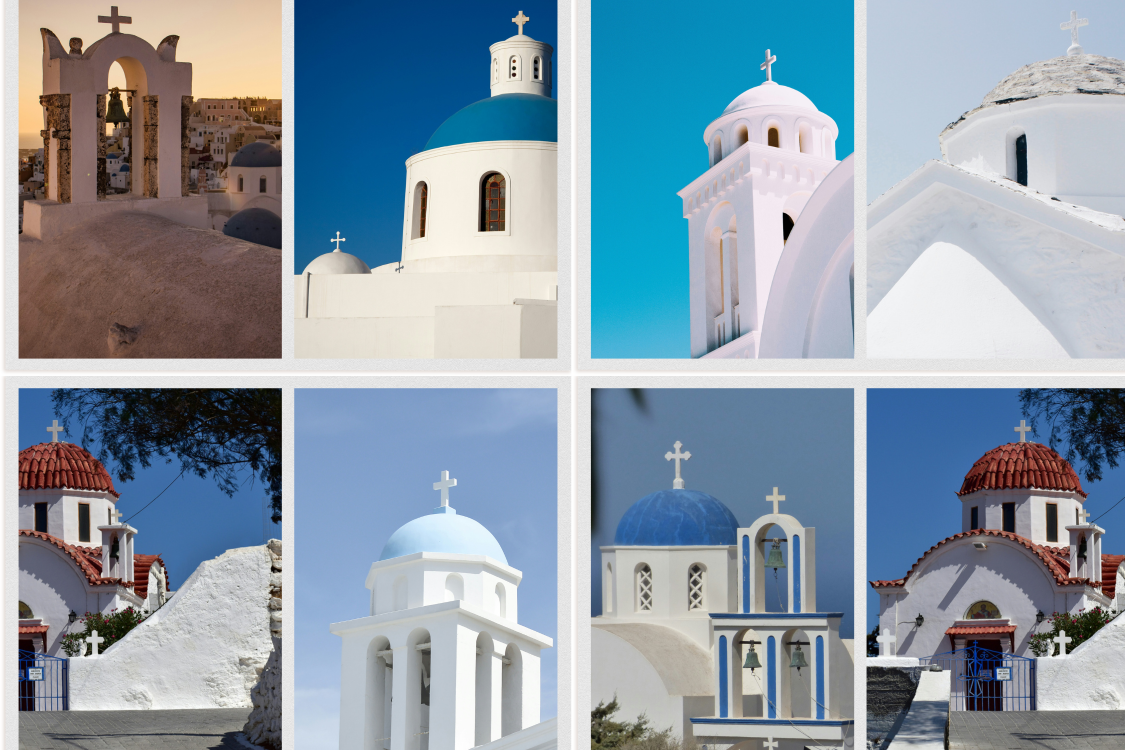Traditional Christmas Dishes in Greece
The first picture that comes to mind when thinking of Greece is a sea view from an island in the Aegean, with the hot summer sun. But Christmas in Greece is one of the best times of the year. In Greece’s big urban centers, like Thessaloniki and Athens, turkey is usually the center dish for Christmas. However, outside of the city, we see more traditional dishes being preserved. In this article, we explore some of the most local traditional Christmas dishes in Greece.

Pork
In general, pork was the historical Christmas feast favorite in the Greek countryside. In ancient times, farming households would feed a pig year round for their feast sacrifice, and not a single piece of the animal was wasted. Hams, sausages, and pork steaks were some of the most popular delicacies at the time, and food was often given to the poorest members of the community. Any meat which was not eaten immediately was preserved for the rest of the year.

“Avgolemono” – Egg and Lemon Soup
Egg and lemon soup, or “avgolemono”, is one of the most famous Greek dishes for major feast days. It is usually eaten after Christmas church services and has a tricky preparation, with chicken, rice, lemon juice, and eggs. The soup must simmer but not boil so that the eggs do not curdle. It has a comforting taste and always reminds Greeks of the holidays.

“Lalangia” – Dough Ribbons
Lalangia are a type of fried dough ribbons which are found in southern Greece, in the Messinian and Laconian regions, and almost every home there will have these. They are typically made on Christmas Eve in a variety of shapes and sizes. It is a good addition to sweet and savory dishes. With sweet dishes, lalangia pairs well with honey, walnuts, raisins, and cinnamon. Today, the popular Mani lalangia are sold in many pastry shops in the area.

“Selinato” – Pork and Celery Stew
Selinato is one of the most classic Greek Christmas dishes, made with leek and sweet potatoes. Celery bulbs are part of the dish, which gives it its name. The vegetables are paired with boiled or stewed meat, which is most often pork. Selinato is most commonly eaten in Lesvos and in Macedonia, both which are in Northern Greece. Selinato became a part of Greek cuisine permanently after the Asia Minor Catastrophe in 1922. It is usually served with plenty of lemon.

“Poutrida” – Boiled Pork with Cabbage
This famous Christmas dish comes from the island of Kefalonia, and uses a local cabbage that is boiled along with pork. With a slow-cooking method and combined with some spices and sauce, it creates a delicious combination of flavors. The dish is of Ottoman origin and it was a favorite of the Sultan. It is unknown how this dish come to the Ionian islands. After the long hours of boiling, the cabbage and cauliflower become so tender that they “dress” the delicious pork like a spicy cream.

“Krasomelo” – Mulled Wine
This favorite Christmastime drink is a Greek mulled wine, similar to glühwein found in Christmas markets across Europe. The best wines include semi-sweet or sweet wine, spices, cinnamon, cloves, peppercorn, and nutmeg. In some areas of Greece, star anise and dried fruits get added. Mulled wine from Greece will get anyone into the right Christmas spirit.

Melomakarona
This cookie is served at Christmastime in Greece. It is made with olive oil, flour, honey, and lemon or orange. Relatively speaking, they are healthier than most desserts, and often include cinnamon and walnuts. Melomakarona were also eaten in ancient Greece, when a barley mixture called makaria was eaten at funerals. The addition of honey to this mixture gives the name “melomakarona.”

Kourabiedes
Kourabiedes are famous as a Christmas cookie in Greece, and the main ingredients are flour, butter, almonds, sugar, and brandy. The most important part is the powdered sugar on top, which add a wonderful sweetness when you bite into them. Kourabiedes have their roots in Persia in the 7th century, and they eventually made their way to Greece.

“Christopsomo” – Christ’s Bread
Christopsomo is translated as “Christ’s bread” and it symbols prosperity and the joy of Christmas. It is not baked at home so often because many bakeries now sell it. The round white bread is covered in sesame and then decorated with a cross in the center. Sometimes walnuts, symbolizing fertility, are also added on top. In Crete in particular, the decorations are very important. High quality honey, rosewater, nuts, and spies like cinnamon and clove are used.









